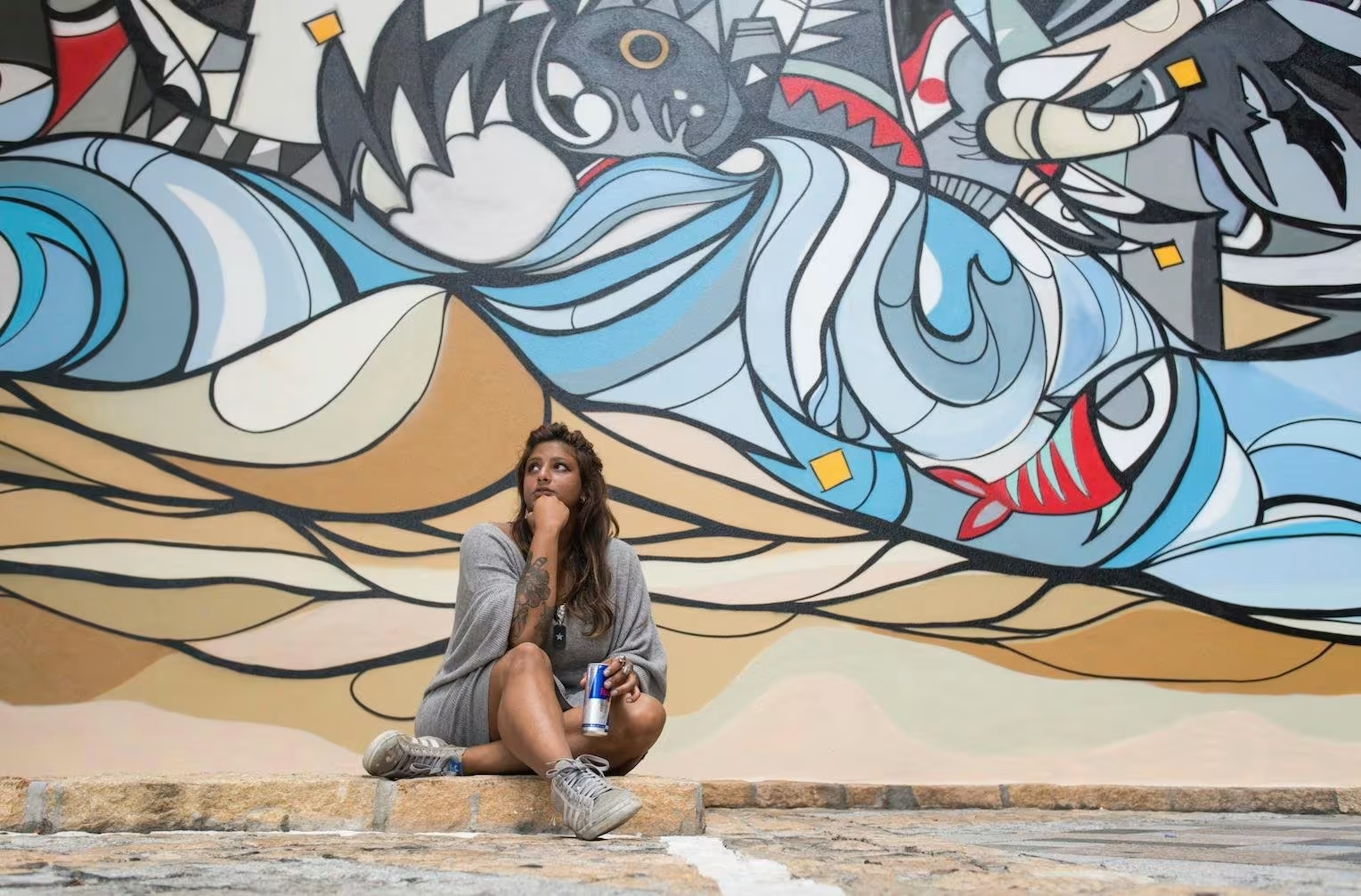ARTIST
Fathima Mohiuddin: Painting Freedom and Identity on the Streets of the World

Fathima Mohiuddin is one of the great street artists in public art, powerfully emphasizing her Indian, UAE, and Canadian heritage in powerful street murals. For over a decade now, Fathima, codenamed Fatspatrol, has created public art in more than 10 cities worldwide through using community wall paints. Her unique art offers symbolism combined with comic-book influences intertwined with her traditional Indian patterns on themes of identity, freedom, and resilience. Fathima is a founder of The Domino-an artist-run platform in Dubai, who remains a beacon for emerging artists but has a unifying experience in her art.
Fathima was born to Indian parents and raised in the UAE. Her multicultural upbringing proved to be a key inspiration in her art, and it can indeed be very much perceived through her murals and public works, drawing from personal reflections on belonging and identity. Her work is full of vivid symbolism, captures triumph and freedom, and moves people beyond the confines of language and borders. Fathima loves comic book ilslustrations and Indian block prints, which make up much of her visual vocabulary. This couple with an interest in all forms of existential questions related to life gives her work that edge of boldness and narrative storytelling. She breaks free from traditional conventions and instead creates abstract and subconscious representations. She invites the viewer to interpret the deeper meaning within, making connections across cultures and experiences.
Her street murals find a spread across cities from Toronto to Dubai since they tend to provide stories universally speaking on resilience, hope, and the journey of self-discovery. Themes tend to run through Fathima’s experiences while navigating multiple cultural identities and her desire to challenge societal definitions of self.
In 2010, Fathima founded The Domino, an artist-run platform in Dubai. The space creates rooms for public art and has, by default, been using the rallying voice for the region’s emerging artists. Fathima seeks to provide accessibility to art through all means while addressing the issues of high art versus the people. She also works towards the inspiration of young creatives to express themselves on canvases across the urban landscape. The platform has emerged as an interactive and dynamic space for creative communities. Here, arts are not just regarded as mere elements of expression but as a tool that can affect the social structure. In this way, Fathima helped redefine what public spaces in Dubai should be – interactive places that provoke thought.
In an international career spanning success, Fathima never loses touch with her roots. She graduated in the Arts & Culture department from the University of Toronto and earned an MA in Sociology from Goldsmiths, University of London. These educational experiences further kindled interest in exploration of all dimensions of cultural identity, social norms, and the role of art in inquiry on existential questions. She has always enjoyed many accolades through her work, including the Sheikha Manal Young Artist Award in 2010. She continues to split her time between Toronto and Dubai, tearing apart the cultural and artistic borders of the East and West worlds.
Fathima’s work has been noticed for her typical qualities of art merged with social comment. Her murals often portray issues of liberty, identity, and resilience, thus serving as visual narratives explaining to the collective human experience that reflects part of her journey from doing art in makeshift studios and becoming one of the country’s most recognized street artists.
Fathima Mohiuddin is an artist whose work is much more than just being an urban artist; she is a tale teller whose work transcends boundaries. Most people inspired by her striking murals, full of symbolism, will begin to think about their existence in the world, since all the forced identities are but a material path toward self-discovery.
